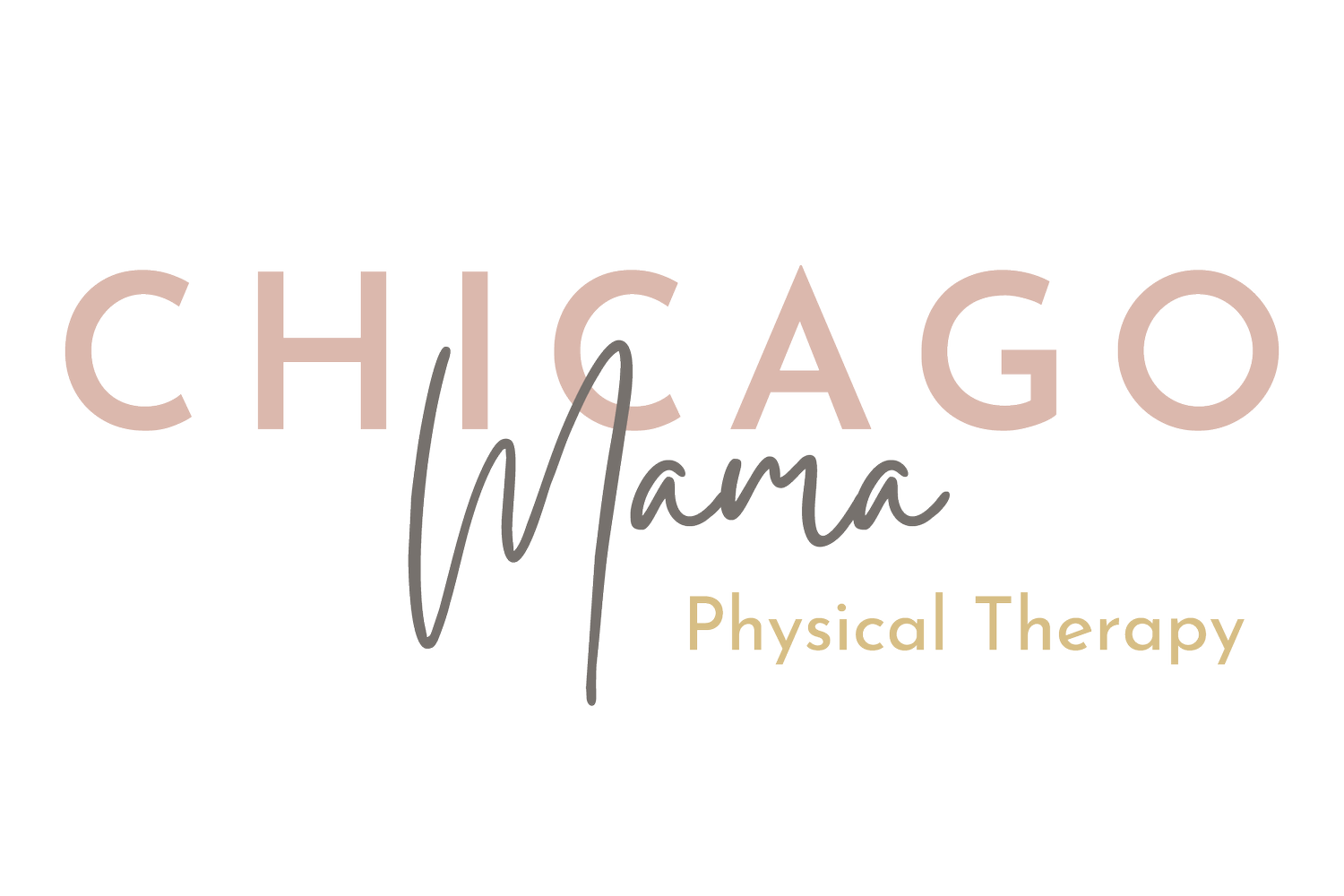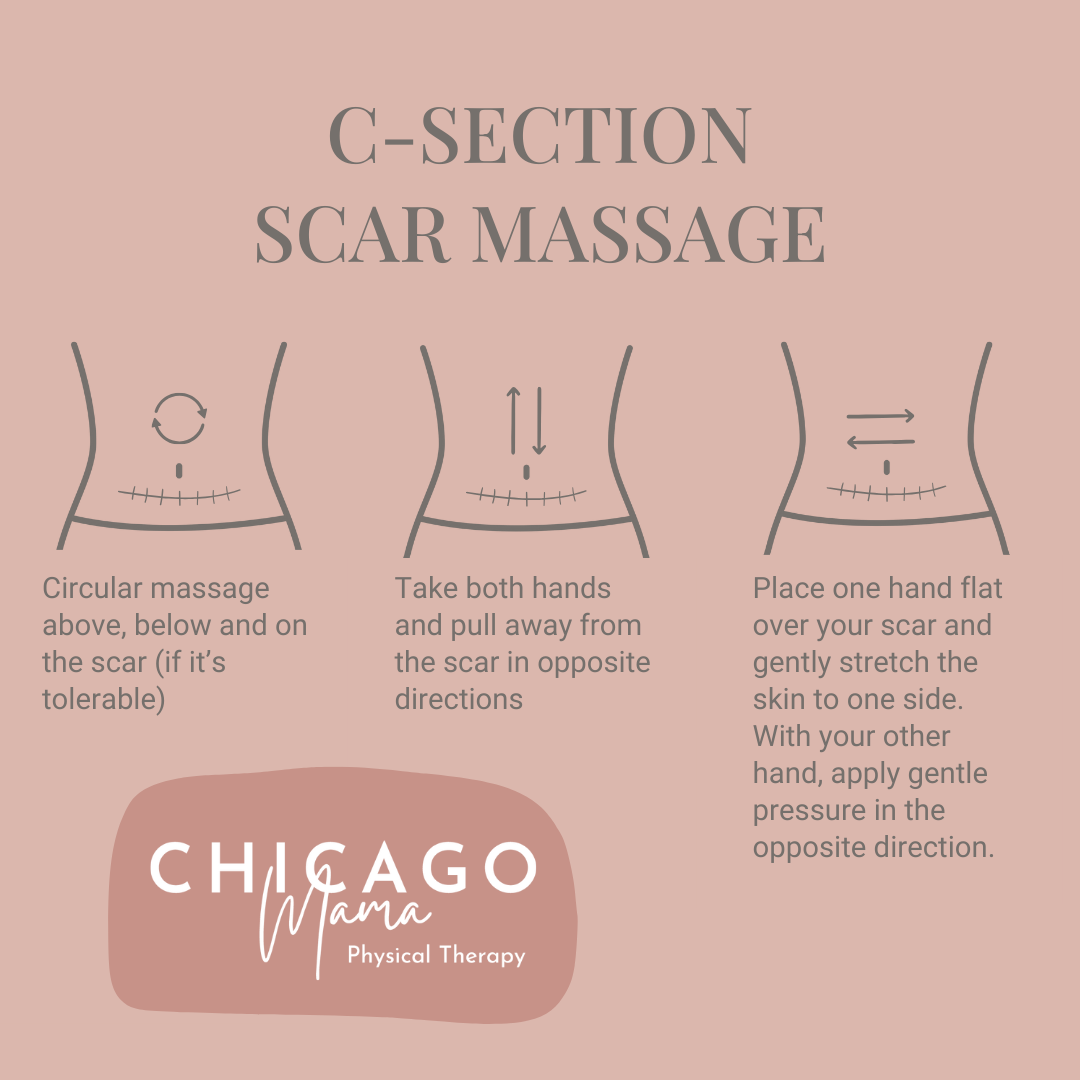C-Section Scar Massage: Why It Matters for Postpartum Recovery
C-Section Scar Massage
Did you know that 1 in 3 women have had a c-section? In this article, we will discuss what c-section scar massage is, how to best massage your scar, and how pelvic floor therapy can be a wonderful addition to your postpartum healing.
Taking care of your c-section scar is more than skin-deep. Scar tissue from an incision can affect how your core and pelvic floor muscles work together, which can impact posture, breathing, bladder function, and overall strength. Scar tissue can bind to muscles and fascia, leading to pain, tightness, or pulling. You may find yourself not wanting to move a certain way because of the discomfort.
Why Scar Massage Helps & How to Safely Massage Your C-Section Scar
Massage can help break down any scar tissue or restrictions. The postpartum phase can be such a busy, whirlwind time filled with so many emotions and tasks, that massaging your scar can be a welcomed, quiet moment in your day. Consider it a chance to reconnect with yourself, show your body some love, and maybe even squeeze in some nourishing deep breaths.
Typically, you can begin massaging your scar 6-8 weeks after your c-section, however, it is best to check with your doctor or midwife before beginning as the wound must be fully healed. You will want to start with gentle pressure. If you find the incision is too sensitive to touch you will want to start with the skin around the incision to desensitize the area. Use the images below to guide you in your c-section scar massage.
Pelvic Floor Therapy for C-Section Recovery
It's never too late to address a C-section scar. Pelvic floor therapy helps restore mobility in the scar and surrounding tissue, improves circulation, and retrains your muscles for better coordination. Pelvic floor therapy can help you move with more ease, rebuild confidence in your core, and reconnect with your body after birth.
If you are experiencing pain, pulling, or limitations in how you can move, don't hesitate to reach out to Chicago Mama Physical Therapy in Barrington, IL.
At Chicago Mama Physical Therapy, we dig deep to address the root cause of your concerns using a holistic, full‑body approach and lifestyle habits for lasting relief. Every one‑hour session is one‑on‑one with a doctor of physical therapy who specializes in pelvic health and supports women during pregnancy, postpartum and beyond. Your care plan is customized to your unique needs and goals.
Next Steps For Healing
Ready to begin your healing journey? Schedule your free discovery call today and learn how pelvic floor therapy can help you. We can't wait to be a part of your journey!
To schedule a free discovery call, visit chicagomamapt.com/contact or call 312.554.5146.
Frequently Asked Questions About C-Section Scar Massage
When can I start massaging my C-section scar?
Most women can begin gentle scar massage around 6–8 weeks postpartum, but always check with your doctor or midwife first to be sure your incision is fully healed.
Is it too late to massage my C-section scar years later?
No. Even if your C-section was months or years ago, scar massage can still help improve mobility, reduce tightness, and ease discomfort.
Can C-section scar massage help with pain or pulling?
Yes. Scar tissue can sometimes bind to the muscles and fascia underneath the incision. Massage helps release those adhesions, reduce pain, and restore ease of movement.
Do I need a professional to massage my scar?
You can do gentle scar massage at home once cleared by your provider. However, a pelvic floor physical therapist can assess your scar, guide you on safe techniques, and address any deeper restrictions. At Chicago Mama Physical Therapy we off several techniques to free up a scar: instrument assisted mobilization, cupping, and dry needling, in addition to scar massage and specific movement patterns to stretch the tissue to be able to move pain free and without restrictions.
How does pelvic floor therapy help after a C-section?
Pelvic floor therapy supports recovery by improving scar mobility, circulation, and core coordination. It can also help with posture, breathing, bladder function, and overall strength.


